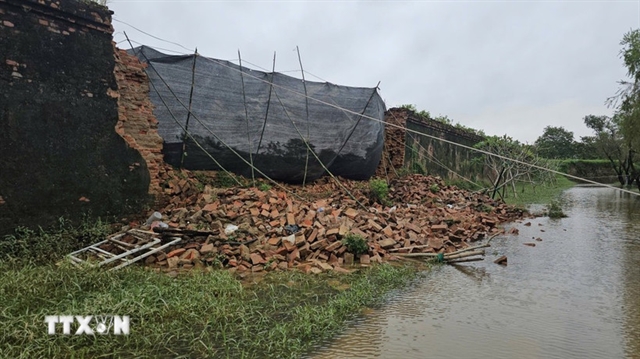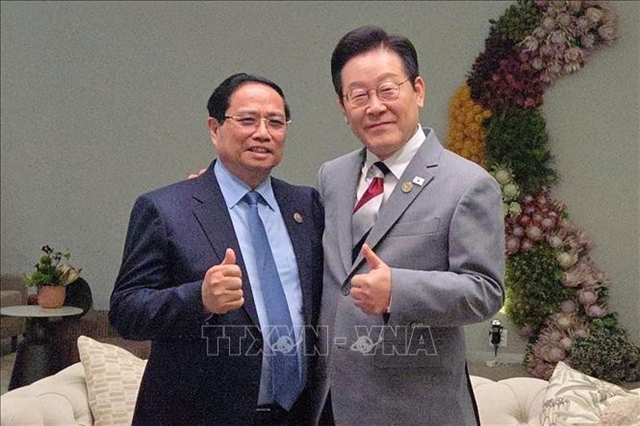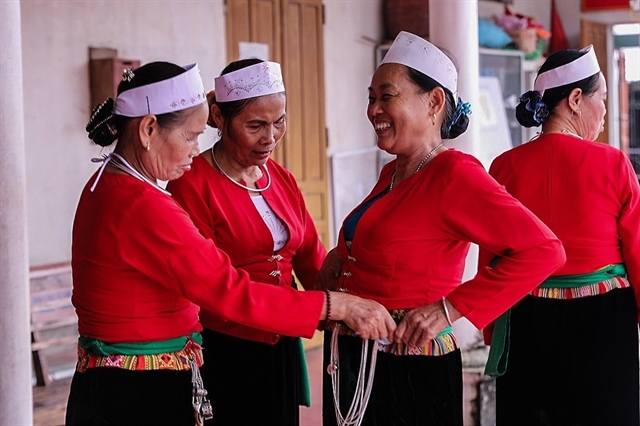 Inner Sanctum
Inner Sanctum

Fine-arts critic Phan Cẩm Thượng recently published his second book in a four-book collection on Vietnamese civilisation. Lê Hương chats with him.
 |
| Player: Researcher Phan Cẩm Thượng. Courtesy Photo of Phan Cẩm Thượng |
By Lê Hương
Inner Sanctum: Please tell us about the new book and the book collection. Why did you wait so long to publish the second book 17 years after the first one was released in 2011.
I have began doing research on Vietnamese civilisation in the 1990s. The research will include four volumes: 1. Văn Minh Vật Chất Của Người Việt (Vietnamese People’s Material Civilisation); 2. Tập Tục Đời Người – Văn Hóa Tập Tục Của Người Nông Dân Việt Nam Thế Kỷ 19-20 (Life’s Customs – Cultural Customs of Vietnamese Farmers in the 19-20th Century); 3. Mày Là Kẻ Nào? (Where Are You From?), and 4. Thế Kỷ 19 – Việt Nam (Việt Nam in the 19th Century).
I gathered materials for the first book in 1992 and finished writing it in 2008. I finished the second second book, in 2015. I need money to write the other two, so I don’t know when they will be released.
Why did you want to conduct such complicated research? Cultural researcher Nguyên Ngọc said the collection was a “collection of history”. Do you think this is a fresh way to approach history?
“Complicated” is the way you think. I just want to do things in a proper way to help myself and readers understand history, life and Vietnamese people in the world. This is nothing new. This is a method from the West related to anthropological research or researching civilisation. It starts with people’s daily lives, such as living, accommodation, production, clothes and travelling.
You are a fine arts critic. How have you turned to doing research on culture? Does your stock of knowledge on fine arts help you deal with cultural research?
I have studied and worked in fine arts. But fine arts actually cover five minor fields, namely architecture, sculpture, painting, graphics and design. I have been teaching art history so I needed wide background knowledge that includes cultural knowledge.
I have printed lots of books on fine arts. They are often expensive, with few readers, while socio-culture books are more popular. I have also spent much time on research.
Could you tell us more about your research process. Have you called for support from friends, colleagues and sponsors? Have you been bogged down with difficulties?
My research process was like and unlike other researchers. I did field trips, gathered materials, but I read so much that when I started writing, I wrote as if I had been living in real life with data. I have stayed in provinces for dozens of years and have travelled a lot. My biggest problem is money. I don’t have any sponsors.
Painter Vũ Giáng Hương asked the Việt Nam Literature and Arts Union to sponsor me with dozens of million đồng (several thousand US dollars). That’s all I have.
When I finish writing, I asked some senior collegues to proof read and contribute opinions. I am writing the last two books, which need lots of money and energy to finish. God bless me, I will finish.
Have you any intention to publish the collection in foreign languages? Will you call for financial aid for that?
Actually, I have written a lot of research findings, including articles in newspapers, as drafts for the books. Nghệ Thuật Ngày Thường (Daily Art) translated by Nguyễn Long is a collection of such research findings. The book was translated into English by Indochina Arts Partnership based in Boston and published by the Thế Giới (World) Publishers in 2008.
Some publishers want to translate the Văn Minh Vật Chất Của Người Việt, but they have no money. Ancient words and the way to express traditional culture are not easy to translate. The translation task totally belongs to the publishers not myself.
How have customs in Việt Nam in the 19-20th centuries changed? Do you think it’s worrying that traditional culture is gradually being lost or do you think it’s an encouraging sign as Vietnamese people are integrating into the world?
This is an issue that I discuss in the book. Customs are not fixed as they were for generations. They have time to be born, to change, to disappear. But the thing to worry about is that interesting features are disappearing while bad features are staying longer in the characters and culture of Vietnamese people, which has hindered them from going forward.
Tell me a little bit about yourself, your habits. What kind of person you are?
I have been living by teaching and drawing. Like many others, I am more interested in playing and travelling. But I always put forward concrete tasks before thinking about playing. Many people hold that I’m hard, difficult to reach, but I don’t think that’s important. Each person should get some achievements. That’s enough. When Vietnamese people judge others by labour productivity rather than behaviour, that’s an advancement. — VNS
 |
| Just out: The cover of the newly launched book by Phan Cẩm Thượng. VNS Photo Lê Hương |




